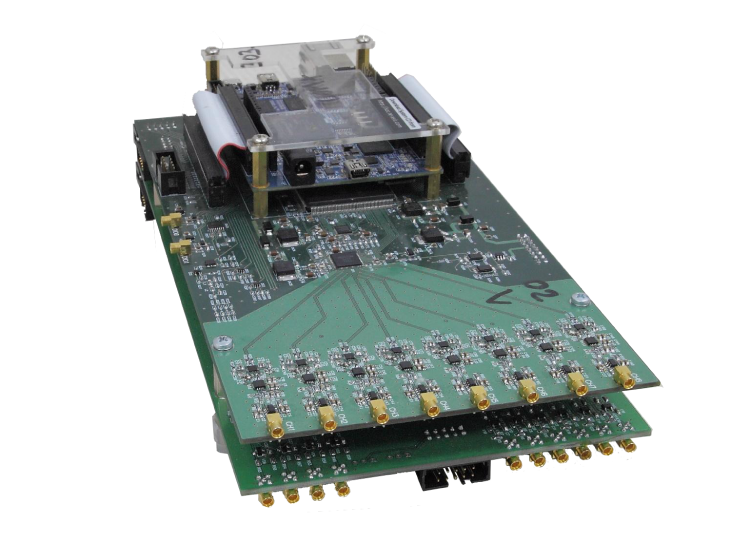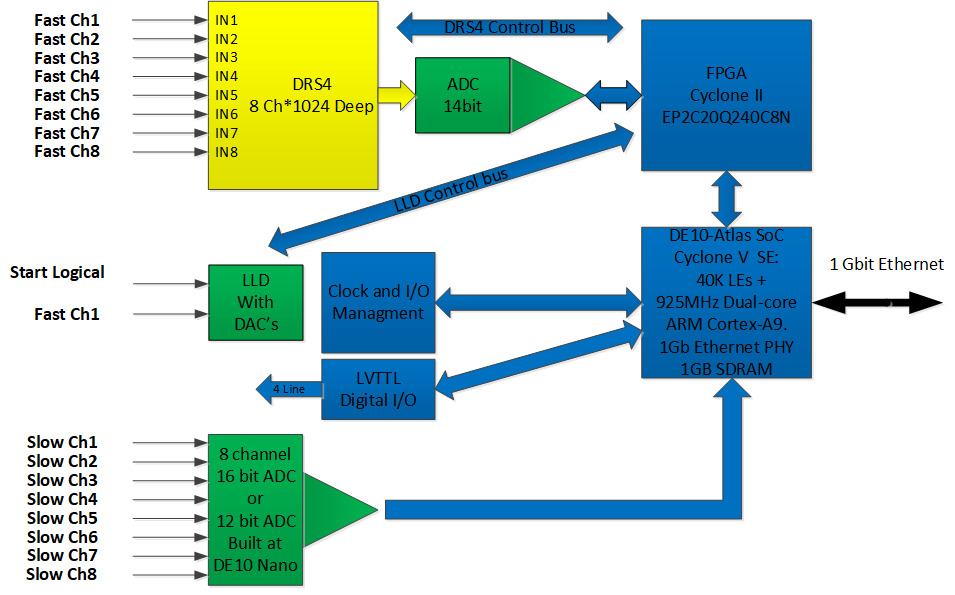ADC 5 GSPS 14 bit

High speed 8-channel ADC based on DRS4 chip.
Features
- 8 50-Ohm terminated input channels with MMCХ connectors.
- Active input buffers which result in an analog bandwidth of 700 MHz (-3dB).
- High bandwidth analog switches disconnect inputs for internal voltage and time calibration.
- DRS4 chip, capable of sampling the 8 input signals simultaneously from 1.0 GSPS to 5 GSPS with 1024 sampling points each, software selectable.
- Software selectable choice quantity sampling point from 128 to 1024 for reducing dead time.
- 1.0 Vpp input dynamic range with adjustable DC offset.
- Adjustable post-trigger delay (up to 200 ns @ 5.0 GS/s).
- Readout rate is up to 3000 events per second with read 1024 sampling points in each 8 channels.
- Daisy chain capability (4 TTL I/O) with a MMCX connector.
- An external trigger input (2 TTL input) with a MMCX connector.
- Altera Cyclone® V SE 5CSEMA4U23C6N device (40k LA, 5k LAB).
- 925MHz Dual-core ARM Cortex-A9 processor.
- 1GB DDR3 SDRAM (32-bit data bus).
- 1 Gigabit Ethernet.
- 8 Channels 12bit ADC (up to 500KHz sampling) with a MMCX connector.
- SPI interface for auxiliary devices control (thermometers, etc).
- 24V/1A Power supply.
- LabBot-based firmware providing easy to use JSON/BSON-based API for all types of external control systems.
- Out-of-the-box web-based user interface for system debug and standalone usage.
Support & Service
- Device firmware might be adopted for specific use cases.
- It is possible to provide support for device integration in external control systems.
- Specific real-time online data processing capabilities can be added to the device firmware if needed.
- Specific external control system or diagnostic software can be developed on demand.
Application information
- High dynamic range (for accurate pulse characteristics measurement).
- High analog bandwidth and sampling rate.
- Significant on-board memory (to store thousands of scattered waveform records).
- High data throughput (for transferring the waveforms from all channels to a central processing unit in the time slot between consecutive triggers).
- An on-board FPGA (providing future-proof solution making possible calculations in real-time to achieve data reduction and therefore lower the data throughput requirements).
